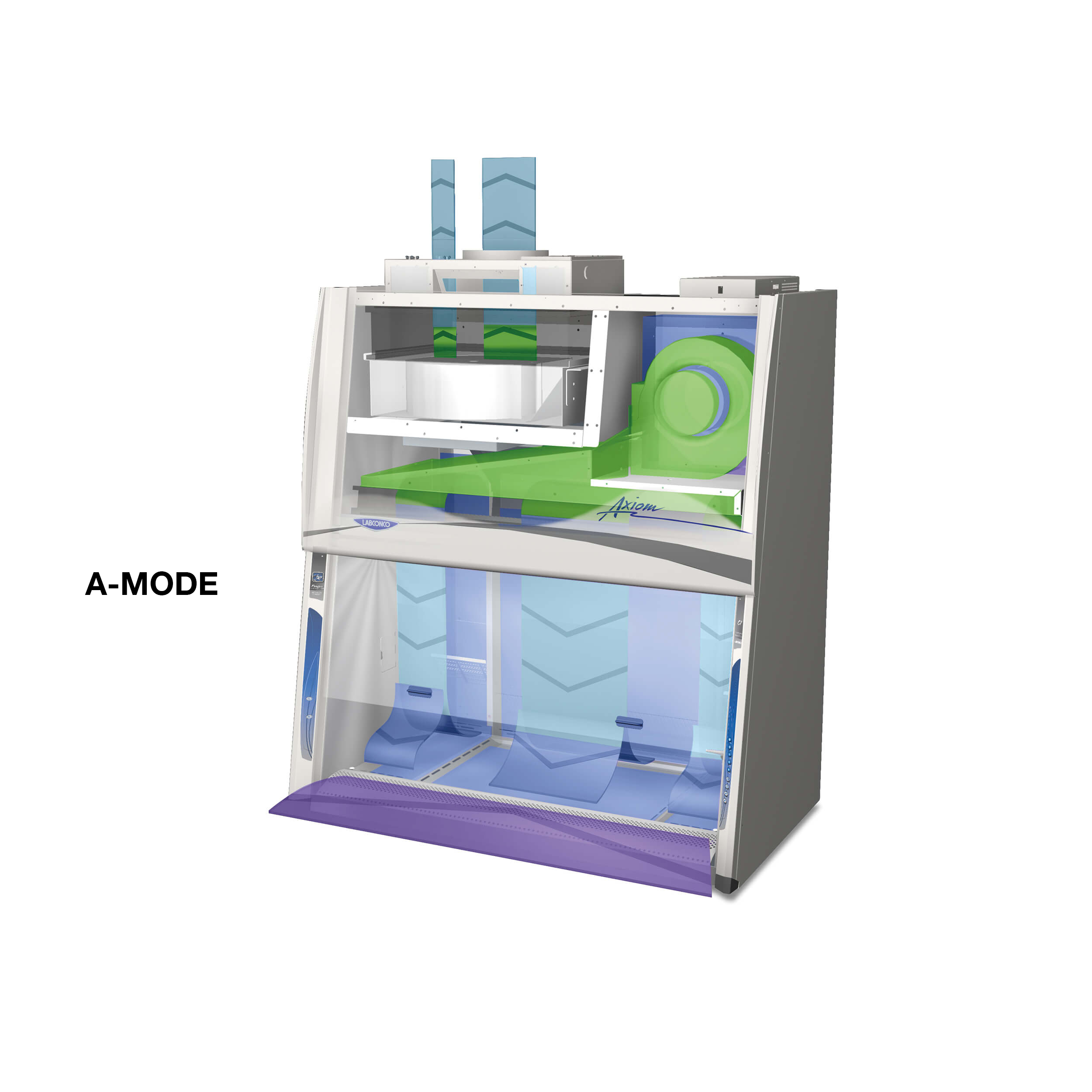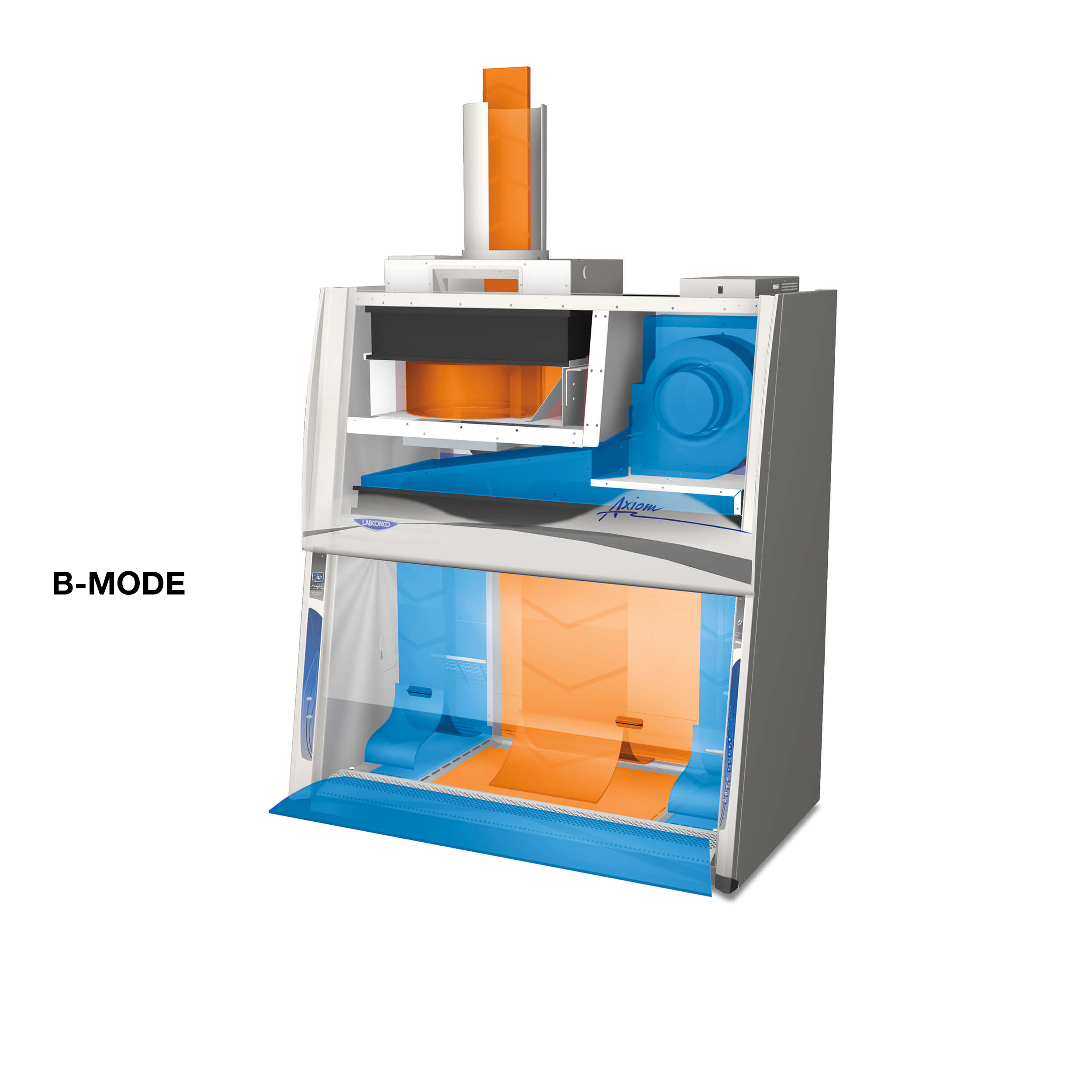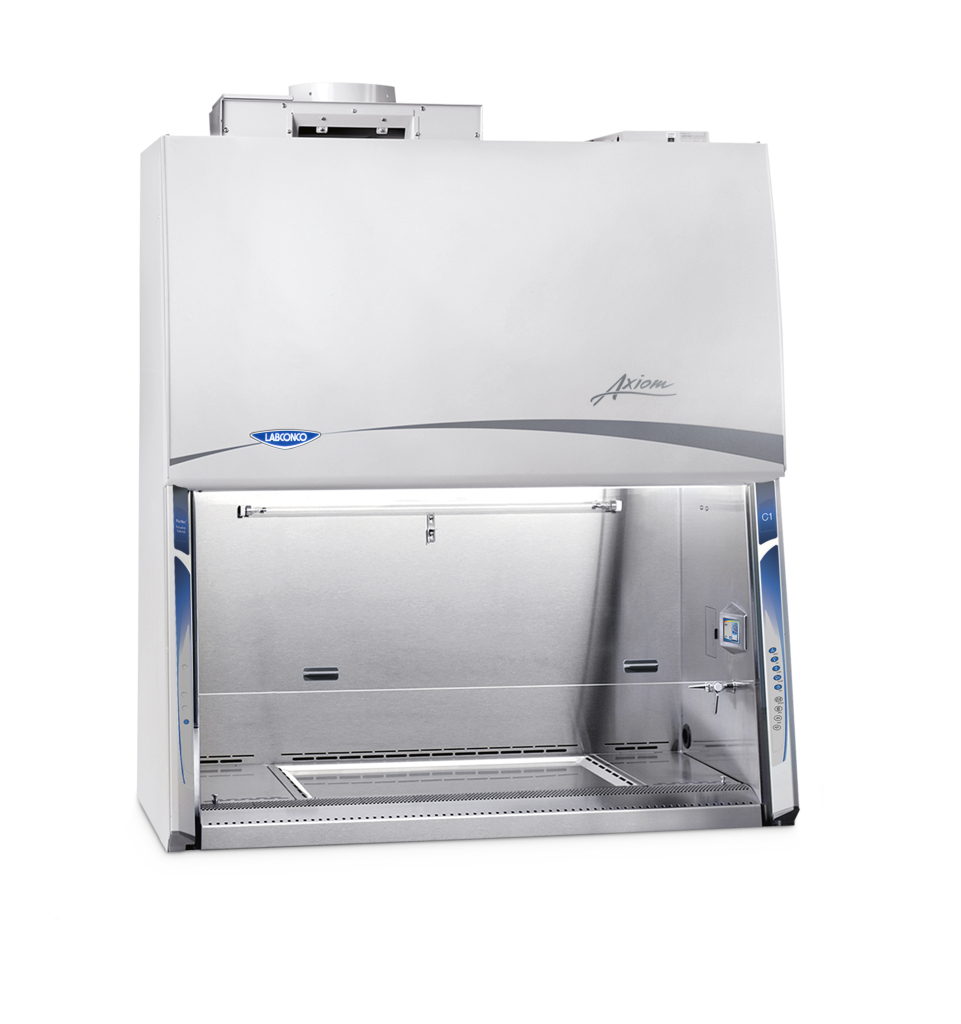Can I really use a C1 instead of a B2? How is it more beneficial?
Regardless of your industry, having the right tools matters. That statement goes both ways, too- You want equipment that allows you to perform effectively and safely, but you also want to keep costs at a minimum.
In other words, if you're a carpenter, you're going to need a hammer—a good, dependable hammer. You don't want to reach for the blunt end of a screwdriver in desperation or have to read an instruction manual for a complicated, expensive gadget you're too frustrated to use.
What if your biosafety cabinet could increase safety, decrease costs and actually save you money in the long term? Labconco set our engineers to this task and they came out with a completely new biosafety cabinet that can function in either Type A mode or Type B mode, and it's quickly becoming a valuable tool for laboratories around the U.S. (like this one at Creighton University).
Before we explore the Axiom™ Class II, Type C1 Biosafety Cabinet, though, let's delve into the backstory about why this technology is indeed so novel. It starts by addressing the longtime struggle of many labs in determining what kind of cabinet they actually require—a Class II, Type A2 or Class II, Type B2.
Determining what Type is needed
Although the field of laboratory research is one rooted in change and new discoveries, sometimes new equipment can be a little more difficult to accept. No one wants to compromise on reliability and safety.
It matters so much, in fact, that we've received many inquiries in the past from customers wanting to purchase Class II, Type B2 total exhaust cabinets with the misconception that these units were safer than their Class II, Type A2 counterparts. This is only partly true, and it comes with a hefty application caveat. Type B2 cabinets are only safer when your biohazardous work requires the use of volatile toxic chemicals or radionuclides as these applications require exhausting to the outside (instead of to the room). In other words, if your application includes hazardous chemistry, you must have a hard-ducted Type B2 (or C1, more on that below).
Please note here that although they're often used interchangeably in the industry, 'hazardous chemicals' and 'hazardous chemistry' do not mean the same thing. For example, if you're working with a hazardous chemical, you don't necessarily need to opt for a Type B2 cabinet, IF that chemical is diluted enough to be rendered non-hazardous. Your safety officer (or an industrial hygienist) can help with risk assessments..
A risk assessment must be performed to determine if the volume and concentration of the chemistry you're going to perform is indeed hazardous. Some risk assessments will find that the application in question warrants a Type A2 biosafety cabinet, a unit that exhausts about 30 percent of its total airflow while recirculating the remaining 70 percent within the cabinet. In contrast, airflow through a Type B2 cabinet is similar to a fume hood, externally exhausting 100 percent of the air pulled through the cabinet. The purpose of this design is to completely remove any toxic chemical vapors or radioactive compounds that are generated inside the cabinet.
Room air is brought into the cabinet through both an opening in the top of the cabinet and through the inlet grille. This air flows through an initial HEPA filter and then downward through the work area. All of the contaminated air is then drawn into a negatively pressured plenum and exhausted through a second HEPA filter. A dedicated exhaust system and remote blower draw all the filtered exhaust air out of the laboratory.
At the end of the day, Type A2 cabinets and Type B2 cabinets are equally safe when used for the properly designated applications. After all, they both utilize HEPA filtration and protect against agents requiring biosafety level (BSL) 1, 2, 3 or 4 containment. In the past, researchers who needed both Type A and Type B functionality would have been forced to purchase both types of cabinets—that is before the C1 was designed.
Type C1 Biosafety Cabinet: Best of Both Worlds
The Class II, Type C1 biosafety cabinet can work in Type A mode or in Type B mode, the first of its kind. Using the C1 in B-mode is more cost effective than a traditional B2 cabinet. A Type C1 cabinet can be tied to almost any existing exhaust system with sufficient CFM reserve, so installation costs are minimal compared to traditional Type B2-only implementations, as B2 style cabinets require an individual exhaust run for each cabinet. Thanks to the design of the Chem-Zone™—the center of the dished work surface that serves as the dedicated exhaust portion of the cabinet when in Type B mode—airflow demand is reduced by more than 50 percent (compared to traditional Type B2 cabinets).


The C1 has dual ECM blowers and our very own Constant Airflow Profile™ (CAP) technology – Which ensures your safety comes first on the C1. In fact, the unit maintains safety for both you and your work, even in the event of a building exhaust failure. Should the remote exhaust blower fail, the C1 will alarm and increase the exhaust air from the internal cabinet blower to compensate. This safety feature can be programmed up to 5 minutes (or disabled if required), allowing adequate time to cleanup of any biological hazards before complete exhaust failure.
View the Purifier Axiom Type C1 Introduction Video
In short, the Type C1 is changing the biosafety game, combining unparalleled versatility and sustainability with unmatched safety. Labs like yours no longer have to teeter the line between Type A and Type B or purchase multiple units to satisfy multiple needs because the Type C1 is capable of handling any application.
| chevron_left | Ever wonder what happened to the Class II Type A/B3 Biosafety Cabinet? | Articles | Laminar flow in the laboratory: What you need to know | chevron_right |







